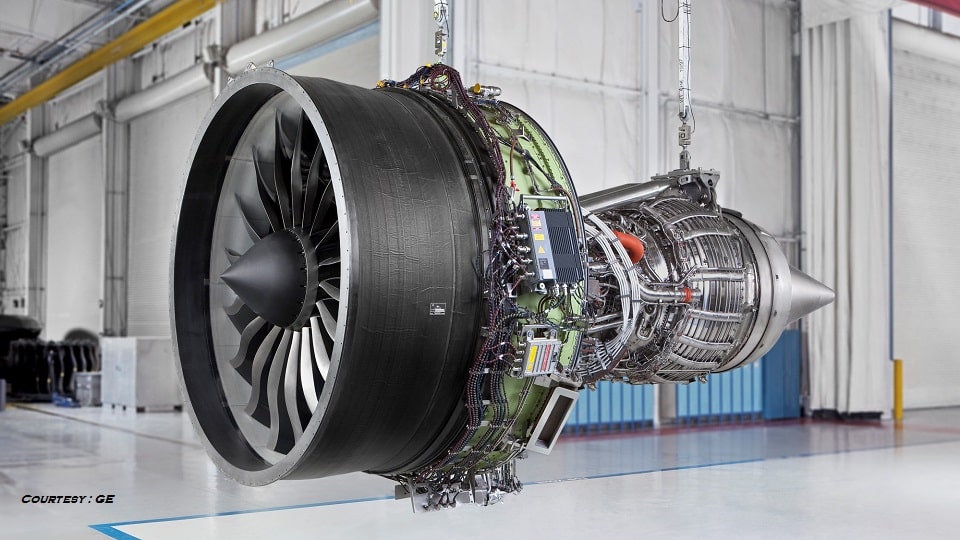Aerospace
GE signs deal with GKN to produce aircraft components in India
General Electric (GE) has entered into agreements with GKN to manufacture aircraft components in India

- GKN Aerospace and GE expand their strong partnership with a new, comprehensive agreement that covers original equipment production, new technology, and increased aftermarket involvement in the GEnx program.
- The comprehensive agreement includes the introduction of sustainable new material solutions along with life-of-program contracts for the GEnx, CF6, GE90, and GE9X fan cases.
- GKN Aerospace also joins the worldwide GEnx engine repair network, which maintains more than 2,000 operational engines.
GKN Aerospace and GE have strengthened their ongoing partnership in a number of top-notch engine projects, including the GEnx program, which is the fastest-selling high-thrust engine.
The new agreement focuses on three main areas: introducing new technology, making fan cases, and repairing complex engine structures on a large scale.
Airbus has inked new contracts with many Indian suppliers to manufacture commercial aeroplane components, supporting the Government of India’s “AatmaNirbharBharat” goal.
Airbus has signed contracts with Aequs, Dynamatic, Gardner, and Mahindra Aerospace for the supply of airframe and wing parts for the A320neo, A330neo, and A350 programmes.
Innovative Collaboration: GKN Aerospace and GE Enhance Engine Programs
The introduction of cutting-edge technology into the GEnx program will concentrate on using alternative materials, which are more environmentally friendly, for several products currently in use.
GKN Aerospace will offer its expertise in component design and its latest technologies to help reduce carbon emissions and costs in the GEnx program. Upgraded components are expected to be developed, tested, and integrated from 2024 to 2030.
Under the new agreement, GKN Aerospace has also secured long-term contracts. They will now supply 100% of the fan cases for GEnx, CF6, and GE90 engines, as well as 50% of the fan case assembly for GE9X engines throughout the program’s duration.
GE Sign Long-Term Deal for Engine Advancements
The enhanced partnership also includes GKN Aerospace becoming part of GE Aerospace’s repair network. They will provide specialized repair services for the GEnx engine, using their expertise in designing and manufacturing advanced components across their global repair network.
Joakim Andersson, President of GKN Aerospace’s Engines business, emphasized the long-standing and strong relationship with GE Aerospace, which has spanned over 40 years.
He stated that this new agreement will ensure continued collaboration to develop technologies and solutions for leading engines like the GEnx and CF6.
Kathy MacKenzie, Vice President of GE Aerospace’s commercial programs, expressed excitement about expanding their strategic relationship with GKN. She highlighted GKN’s design skills and production capacity, which will meet the strong demand for the GEnx engine, and their component repair services, which will offer cost-effective options for their service customers.

Aerospace
Boeing Transfers Rocket Stage to NASA, Paving Way for Human Moon Mission

Boeing has achieved a significant milestone by providing NASA with the second core stage of the Space Launch System (SLS) rocket.
This crucial component, crafted at NASA’s Michoud Assembly Facility (MAF), is set to propel the Artemis II crew into lunar orbit, marking humanity’s return to deep space after a 50-year hiatus.
The monumental Boeing-built rocket stage, the largest element of the Artemis II mission, will embark on a journey aboard the Pegasus barge, traveling 900 miles to NASA’s Kennedy Space Center.
Comparison of two legendary aircraft B777x vs B747 aircraft:Click here
Upon arrival, it will be meticulously integrated with other essential Artemis II components, including the upper stage, solid rocket boosters, and NASA’s Orion spacecraft within the iconic Vehicle Assembly Building. This intricate integration process is a vital step toward the eagerly anticipated Artemis II launch, slated for 2025.
“Boeing-built products helped land humankind on the moon in 1969, and we’re proud to continue that legacy through the Artemis generation,” remarked Dave Dutcher, vice president and program manager for Boeing’s SLS program. “Together, with NASA and our industry partners and suppliers, we are building the world’s most capable rocket and paving the way to deep space through America’s rocket factory in New Orleans.”
NASA, Lockheed Martin Reveal X-59 Quiet Supersonic Aircraft:Click here
The delivery of Core Stage 2 marks a significant achievement in the evolution of the SLS rocket. Towering over 200 feet and powered by four RS-25 engines, this core stage, coupled with two solid-fueled booster rockets, will generate a staggering 8.8 million pounds of thrust. This immense power is crucial to launching Artemis II and future missions into the vast expanse of space.
The SLS rocket stands unparalleled in its capability to transport both crew and substantial cargo to the moon and beyond in a single launch. Its extraordinary capacity will facilitate the delivery of human-rated spacecraft, habitats, and scientific missions to destinations including the moon and Mars, ushering in a new era of space exploration.
-

 Travel1 week ago
Travel1 week agoAir India to Expand US Operations with Three New Routes After a Decade
-

 Travel2 weeks ago
Travel2 weeks agoWhy We Should Avoid These Stamps in a Passport
-

 Airlines1 month ago
Airlines1 month agoInvestigations Reveal Fake Chinese Titanium in Boeing and Airbus Jets
-

 Tech4 weeks ago
Tech4 weeks agoChina’s CATL Plans 1,800-Mile Electric Plane Launch by 2027
-

 Airport3 days ago
Airport3 days agoTop 10 Largest Airports in the World by Size
-

 Aerospace4 weeks ago
Aerospace4 weeks agoChina’s Fighter Jets Turn Wings into Autonomous Drones
-

 Airlines4 days ago
Airlines4 days agoAir India Rolls Out A350s for Delhi-New York JFK and Newark Routes
-

 Defence3 weeks ago
Defence3 weeks agoBoeing Enhances Chinook with New Engines and Block II Upgrades at $96 Million







